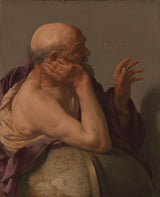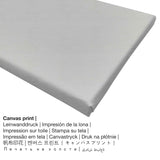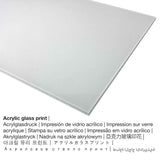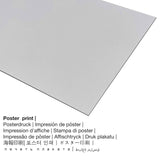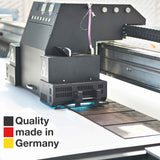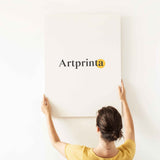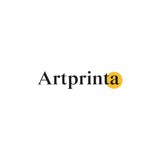Hendrick ter Brugghen, 1628 - Heraclitus - mbipụta nka mara mma
Ụtụ gụnyere. Mbupu gbakọrọ na ndenye ọpụpụ.
Onyinye ngwaahịa ebipụta
N’afọ 1628 na nwoke artist Hendrick ter Brugghen created this baroque artwork titled "Heraclitus". N'ịga n'ihu, enwere ike ịhụ nka nka n'ime Rijksmuseum's nchịkọta nka dijitalụ, nke dị na Amsterdam, Netherlands. The nka ochie ngalaba ọha artpiece na-ọnọ n'ikike nke Rijksmuseum.Ebe E Si Nweta nke ihe osise:. E wezụga nke a, nhazi nke mmepụta dijitalụ bụ Eserese ma nwee oke onyonyo nke 1: 1.2, nke pụtara na ogologo bụ 20% mkpụmkpụ karịa obosara. Hendrick ter Brugghen was a male painter from the Netherlands, whose style was primarily Baroque. The Dutch artist was born in 1588 na Hague, The, South Holland, Netherlands ma nwụọ mgbe ọ dị afọ 41 n'afọ 1629.
Ezi nka ebipụta anyị na-enye:
Maka mbipụta nka ọ bụla anyị na-enye ụdị nha na ihe dị iche iche. Anyị na-ahapụ gị ka ịhọrọ nha na akụrụngwa ọkacha mmasị gị n'etiti nhọrọ nhazi ngwaahịa ndị a:
- Mbipụta kwaaji: The printed canvas material mounted on a wood stretcher frame. The canvas generates a soft and comfy ambience. Canvas prints are relatively low in weight. That means, it is easy to hang the Canvas print without the help of additional wall-mounts. That is why, a canvas print is suited for any type of wall.
- Mpempe akwụkwọ ederede (akwa akwa akwa): A poster is a printed sheet of canvas with a slightly roughened finish on the surface. It is particularly suited for placing your art copy with the help of a custom frame. Please keep in mind, that depending on the size of the poster print we add a white margin of around 2-6 cm round about the artwork, which facilitates the framing.
- Bipụta na iko acrylic na-egbuke egbuke: An acrylic glass print, often referred to as a print on plexiglass, will change your favorite original into gorgeous décor. The great benefit of an acrylic glass fine art print is that contrasts and small details become more identifiable due to the very fine gradation. The real glass coating protects your custom art print against light and external influences for up to 60 years.
- Aluminom dibond mbipụta (ọla): An Aluminium Dibond print is a print material with a true depth effect, which makes a fashionable impression with a surface structure, that is not reflective. The Direct Print on Aluminum Dibond is the ideal start to art reproductions with aluminum. The white & bright parts of the original work of art shimmer with a silk gloss but without any glare. The colors are luminous and bright, the details of the print appear clear and crisp. This direct UV print on aluminium is the most popular entry-level product and is a truly stylish way to display art prints, since it puts the viewer’s focus on the replica of the artwork.
Important note: We do whatever we can to describe the products as precisely as possible and to illustrate them visually. However, the colors of the printing material, as well as the imprint can diverge to a certain extent from the presentation on your device's monitor. Depending on the settings of your screen and the condition of the surface, color pigments may not be printed as exactly as the digital version on this website. Considering that all the are printed and processed manually, there might as well be minor discrepancies in the motif's size and exact position.
Ngwaahịa a
| Nkewa bipụta: | mmepụta nka |
| Mmeputakwa: | dijitalụ mmeputakwa |
| Usoro mmepụta: | mbipụta dijitalụ (Mbipụta UV ozugbo) |
| Mmalite ngwaahịa: | Germany |
| Ụdị ngwaahịa: | na mmepụta ihe |
| Ngwaahịa were: | nchịkọta nka (mmeputakwa), imewe ụlọ |
| Ndepụta: | nhazi ihe osise |
| Oke akụkụ onyonyo: | (ogologo: obosara) 1: 1.2 |
| Nsonaazụ: | ogologo bụ 20% mkpụmkpụ karịa obosara |
| Ngwa ngwaahịa dị: | Mpempe akwụkwọ, akwụkwọ mmado (akwụkwọ kwaaji), mbipụta ọla (aluminium dibond), mbipụta iko acrylic (nwere ezigbo mkpuchi iko) |
| Ọdịiche dị n'okirikiri akwa akwa akwa (akwa akwa): | 50x60cm - 20x24", 100x120cm - 39x47" |
| Mbipụta iko acrylic (nwere ezigbo mkpuchi iko) dị iche iche: | 50x60cm - 20x24", 100x120cm - 39x47" |
| Mpempe akwụkwọ mmado (akwụkwọ kwaaji) nha: | 50x60cm - 20x24", 100x120cm - 39x47" |
| Mbipụta aluminom (aluminium dibond ihe) dị iche iche: | 50x60cm - 20x24", 100x120cm - 39x47" |
| Nhazi mbipụta nka: | adịghị |
Nkọwa gbasara ọrụ nka mbụ
| Aha nka: | "Heraclitus" |
| Nhazi nka: | sere |
| Okwu mkpokọta: | nka ochie |
| Century: | 17th narị afọ |
| Emepụtara na: | 1628 |
| Afọ nka: | karịa afọ 390 |
| Ụlọ ihe ngosi nka / ebe: | Rijksmuseum |
| Ebe ngosi nka: | Amsterdam, Netherlands |
| Webụsaịtị ihe ngosi nka: | www.rijksmuseum.nl |
| Licensedị ikike: | ngalaba ọha |
| Site n'aka: | Rijksmuseum |
Nchịkọta nkenke nke onye na-ese ihe
| aha: | Hendrick ter Bruggen |
| A makwaara dịka: | Hendrick Terbrugghen, terbrugghen, Hendrick Terbruggen, Terbruggen Hendrik, terbrugghen henrick, Hbrugghen, Terbrugghen Hendrik, טרבורגן הנדריק, Hendrik ter Bruggen, Ten Brugge, terbrueggen, Ter Brugge, hendrik terbrugghen, Terbruggen, Ter Brugge Hendrick, Hendrick ter Brugghen, Brugghen Hendrick Jansz. ter, Ten Brugge Hendrick, Heyndr. ter Burgh, Verbrugh, Enrico d'Anversa, Henrick Terbrugghen, Ter Brug, Hendrik Ter Brugghen, Ter Brugh, Terbrugghen Hendrick, H Brugge, Terbrugghen Hendrick ter, Terbruggen Hendrick, Terbrugh, hendrik terbruggen, Terbrugghen Heinrick, Ter Brugghen Hendrick, Terbrugghen Hendrick Jansz. ter, Brugghen Hendrickjansz. Ter, Henrico ter Bruggen, Ter Brugghen, Van der Brugge, Brugghen Hendrick ter, Terbrugge, Terbrugge Hendrick |
| okike nke onye nka: | nwoke |
| Obodo onye nka: | Dutch |
| Ọrụ: | onye na-ese ihe |
| Obodo onye nka: | mba netherland |
| Nkewa onye nka: | nna ukwu ochie |
| Ụdị nke onye na-ese ihe: | Baroque |
| Nwụrụ na afọ nke: | 41 afọ |
| A mụrụ: | 1588 |
| Ebe omuma: | Hague, The, South Holland, Netherlands |
| Afọ ọnwụ: | 1629 |
| Ebe ọnwụ: | Utrecht, mpaghara Utrecht, Netherlands |
Copyright right, Artprinta.com (Artprinta)
Nkọwa nka site na Rijksmuseum (© Nwebiisinka - site Rijksmuseum - www.rijksmuseum.nl)
The Greek sage Heraclitus was known as the crying philosopher because he mourned the folly of mankind, while his opposite Democritus (the nearby pendant) could only laugh at it. Here Heraclitus looks like a melancholy old man. Downcast, he leans on a terrestrial globe and gestures dismissively with his left hand, as if to say: ‘All is for nought, the world will come to nothing.’

